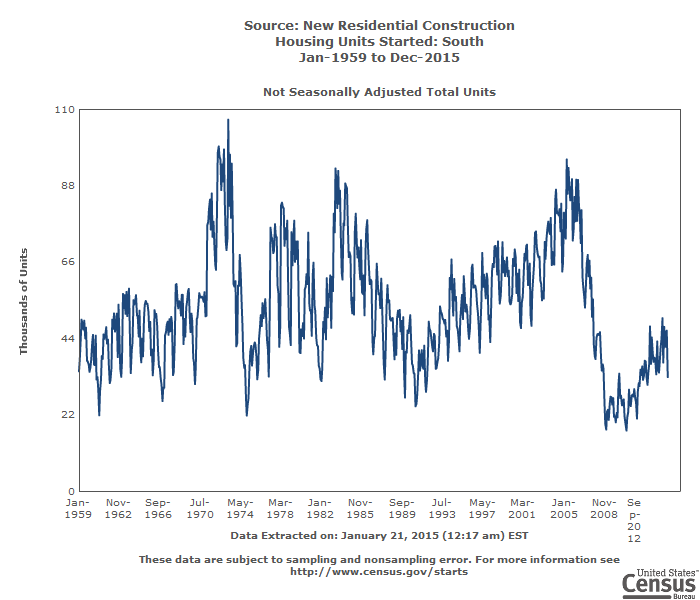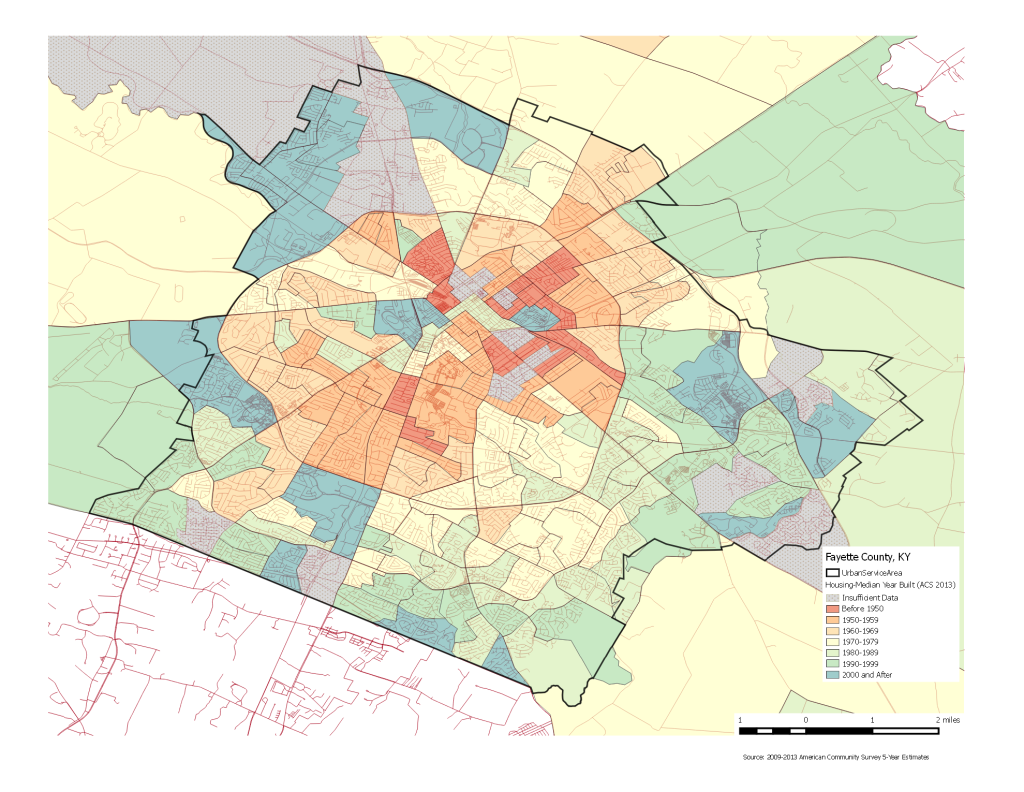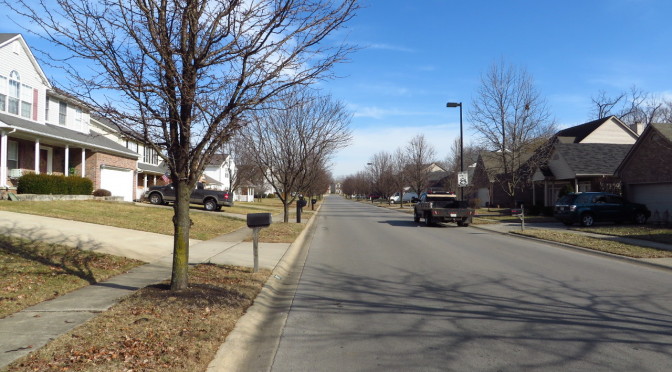Today, I visited the Masterson Station neighborhood. The area I visited today dates from the mid- to late- 1990s, with houses a little larger than average. The area is fairly typical, in terms of architecture, topology, landscaping, of similarly aged neighborhoods. I liked Masterson Station Drive, which serves as a minor collector road. Unlike similar streets in similar neighborhoods, Masterson Station Drive is narrower and has a lower speed limit. It’s more pleasant to walk down and you don’t have to pity those residents of the street who have to pull out onto the road every morning during rush hour.
It seems like there is a surprisingly large number of houses from the 1990s and 2000s in Lexington. Growth, and especially exponential growth has the ability to do weird things. Lexington’s population grew from 225,000 people in 1990 to 308,000 people in 2013, a nearly 37% increase over that time. It wouldn’t be unreasonable to expect total housing units to increase by a similar amount over that period, which would mean that nearly a quarter of all housing units available in 2013 were built since 1990, even without some attrition of older housing.
In reality, the situation is a little more complicated, and housing starts are not solely driven by population. Census data for the South shows that housing starts increased fairly steadily over the 1990s and 2000s, peaking before the housing crisis and then declining rapidly. The data isn’t granular and can’t be explored at the level of metropolitan area but I imagine this story is familiar–boom and bust. The net impact though may be to confirm my impression that an awful lot of houses (perhaps too many!) were built during the 90s and 00s.
 I wanted to visualize housing age in a different way, mapping neighborhood age. Census data on housing includes median year built at the census block level. (Census tracts are the base level at which the census reports population data; census blocks are subdivisions of tracts, though in many cases they are the same.) I sorted the data into bins by decade and then mapped them. There are problems with this representation. It doesn’t show margin of error which in some areas can be significant. It also doesn’t account for density, so while newer areas dominate in terms of area, it’s impossible to draw any conclusion about quantity of housing in any area. Still, it does provide some insights. New Circle Road appears to have been a fairly hard edge for development. Infill development like that in the East End (see Day 11) stands out.
I wanted to visualize housing age in a different way, mapping neighborhood age. Census data on housing includes median year built at the census block level. (Census tracts are the base level at which the census reports population data; census blocks are subdivisions of tracts, though in many cases they are the same.) I sorted the data into bins by decade and then mapped them. There are problems with this representation. It doesn’t show margin of error which in some areas can be significant. It also doesn’t account for density, so while newer areas dominate in terms of area, it’s impossible to draw any conclusion about quantity of housing in any area. Still, it does provide some insights. New Circle Road appears to have been a fairly hard edge for development. Infill development like that in the East End (see Day 11) stands out.

